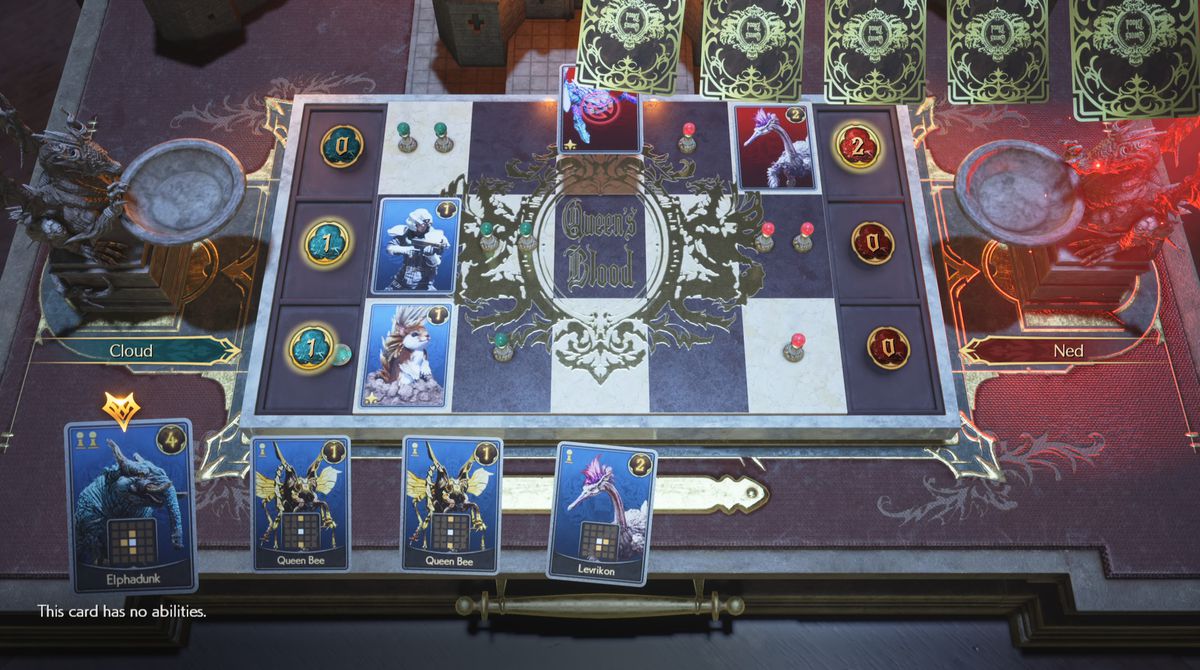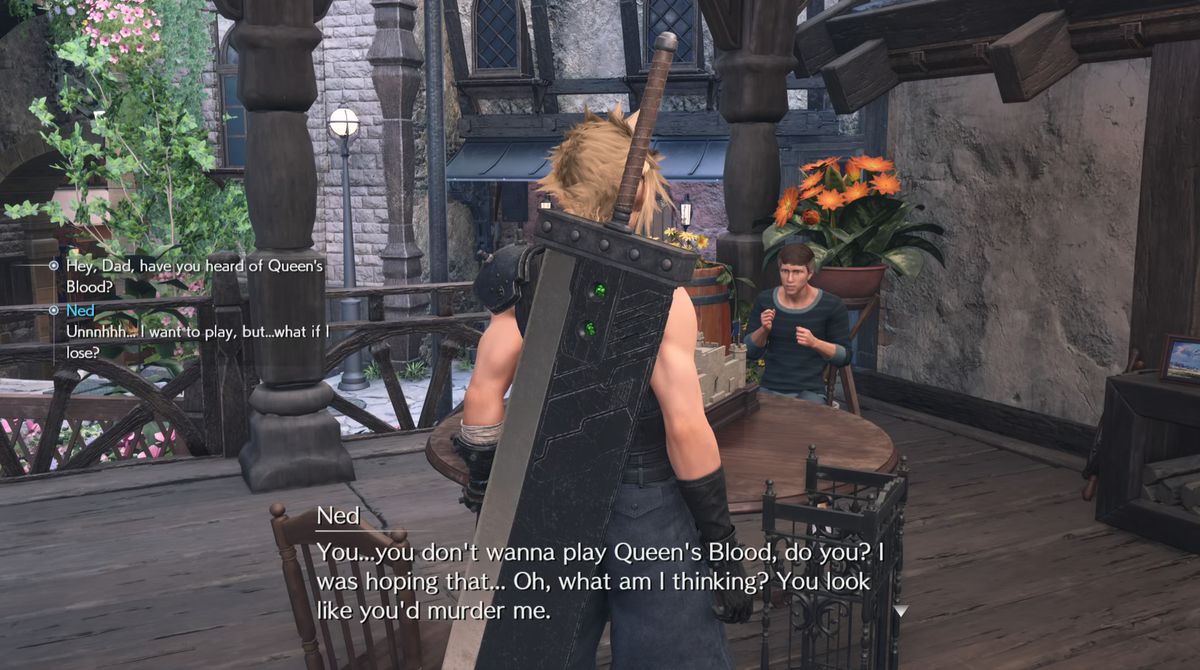Once upon a time, Gwent was just a humble county in south Wales, across the Severn river (and the border with England) from Bristol. Then, a few years ago, this proud Welsh region lost its Google ranking to an upstart name-stealer. That upstart was a collectible card game within CD Projekt Red’s wonderful role-playing game The Witcher 3, and it became an obsession for many of that game’s millions of players. Gwent took on a life of its own and influenced dozens of copycats, and now “a Gwent” is synonymous with any game within a game, particularly if it’s a strategic, card, or board game that can be played against non-player characters.
Now the Final Fantasy developers at Square Enix, who were seeding games within their epic RPGs years before The Witcher 3 had even been thought of, are back to reclaim their crown. Final Fantasy 7 Rebirth has a Gwent — and it’s one of the best and most original we’ve seen in a while.
Rebirth’s Gwent is called Queen’s Blood, and I got to try it out at a recent press preview in London, during which I had the opportunity to play through the game’s first few hours. Rebirth, the second installment in Square Enix’s expanded and remixed retelling of the 1997 classic, opens with a dramatic flashback chapter. After that, we join Cloud Strife and his band of friends where they’re hiding out and resting in the charming pastoral town of Kalm. Here, Rebirth fills out a few plot points, game mechanics, and features — including Queen’s Blood, which can be played with several townspeople.

Image: Square Enix via Polygon
If you’re expecting Queen’s Blood to be a card battler in the vein of Magic: The Gathering or Hearthstone, you’re in for a surprise. It’s not even much like Gwent. While it is a collectible card game, it works very differently from those other games. The cards’ key properties aren’t special abilities, but rather the patterns of influence they have on the board, in what is essentially a very tight game of territory capture.
The two players vie for control of a checkered board; to begin with, the board has three lanes of five tiles each (I assume there will be bigger boards to play on later) and players work in from the left and right edges. The goal is to open up the board for your cards and put down cards with the highest possible power value. When the power values of the cards are tallied, only the highest total value for each lane contributes toward the final score.
Players take turns to place cards based on Final Fantasy monsters on the board, but can only place them on tiles they own, marked by little pawns in their color. Once they put down a card, it opens up more tiles to place more cards according to a pattern marked in a grid on the card. If the pattern overlaps with tiles you already own, those tiles gain extra pawns and are ranked up, which means you can place more powerful, higher-level cards there. If it overlaps with a tile owned (but not occupied) by your opponent, you take control of that tile. Some cards also have abilities that affect special tiles, marked in red in the card’s pattern; an example might be that any card placed on that tile has its power value doubled.

Image: Square Enix via Polygon
It’s a simple but deeply strategic, almost puzzle-like setup. In Queen’s Blood, the cards’ spatial relationship and their areas of effect are everything. Each turn is dense with decision-making as you attempt to expand your influence on the board, rank up tiles so you can put down your best cards, and make the most efficient use of the cards’ abilities. It takes some getting used to, and after the tutorial, it took me three or four hands to beat the first opponent I challenged (a nervous man named Ned, sitting on a porch, who loves a good cry).
I didn’t even begin to get into the deck-building side, which presumably has enormous depth; although the cards’ abilities are quite simple when compared to those in something like Hearthstone, the interplay of ability, tile pattern, power, and rank for each card gives you a lot of factors to consider when building a balanced deck.
Queen’s Blood is dense and initially difficult, but the visual, puzzle-solving element of tile capture using the cards’ varying patterns really appeals to me and sets it apart from other deck-building Gwents. I can see myself losing hours to this one before I’ve even set out from Kalm on the rest of my adventure.
Final Fantasy 7 Rebirth will be released for PlayStation 5 on Feb. 29.
- SEO Powered Content & PR Distribution. Get Amplified Today.
- PlatoData.Network Vertical Generative Ai. Empower Yourself. Access Here.
- PlatoAiStream. Web3 Intelligence. Knowledge Amplified. Access Here.
- PlatoESG. Carbon, CleanTech, Energy, Environment, Solar, Waste Management. Access Here.
- PlatoHealth. Biotech and Clinical Trials Intelligence. Access Here.
- Source: https://www.polygon.com/24062207/final-fantasy-7-rebirth-queens-blood-is-a-very-good-gwent



